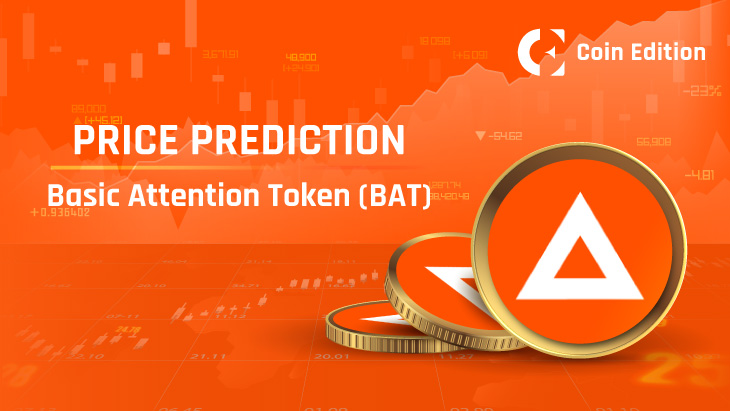The year 2024 has been pivotal for cryptocurrency exchange-traded funds (ETFs), marking a new chapter in the evolution of digital assets as mainstream investment options. With ETFs offering retail and institutional investors easier access to cryptocurrencies, the market witnessed significant developments, including increased liquidity, regulatory clarity, and shifts in investor sentiment. This article examines the performance of crypto ETFs throughout the year, analyzing their impact on market dynamics, adoption trends, and the broader financial ecosystem. As we conclude this transformative year, it’s crucial to assess whether crypto ETFs lived up to their potential and what their success—or challenges—might signal for the future of digital finance.
Bitcoin ETF Approval: A Turning Point in Crypto Adoption
The U.S. Securities and Exchange Commission (SEC) approved 11 spot Bitcoin ETFs on January 10, 2024. This move followed over a decade of regulatory hesitation, beginning with the Winklevoss twins’ initial application in 2013. Over years, the SEC had repeatedly denied applications for spot Bitcoin ETFs, citing concerns about market maturity and potential manipulation. However, the approval was catalyzed by a court ruling in favor of Grayscale Investments, which challenged the SEC’s rejection of its proposal to convert the Grayscale Bitcoin Trust (GBTC) into an ETF.
This decision was significant for multiple reasons. Spot Bitcoin ETFs provide direct exposure to Bitcoin rather than relying on futures contracts, offering investors a simpler and potentially more cost-effective method to invest in the cryptocurrency. These ETFs began trading on January 11, 2024, across various U.S. exchanges and saw immediate traction, with $4 billion in trading volumes reported within the first day.
From Bitcoin to Ethereum: A Year of Landmark ETF Approvals
Following the landmark approval of spot Bitcoin ETFs, the SEC further advanced the integration of cryptocurrencies into mainstream finance by approving several spot Ethereum ETFs on July 23, 2024. Similar to Bitcoin ETFs, the Ethereum approvals reflected a regulatory shift from years of skepticism toward embracing digital assets. Both processes highlighted the importance of court rulings and institutional advocacy in overcoming initial resistance. However, while Bitcoin ETFs saw swift and substantial inflows, Ethereum ETFs are projected to garner about 20–25% of the inflows experienced by Bitcoin ETFs, reflecting Ethereum’s distinct investment profile and market position.
A notable difference lies in the regulatory considerations tied to Ethereum’s proof-of-stake (PoS) mechanism. While Bitcoin ETFs faced scrutiny mainly over market manipulation risks, Ethereum ETFs are constrained by unresolved questions regarding staking and its potential classification as a securities offering. This divergence underscores the unique challenges and opportunities each cryptocurrency faces as they gain traction in regulated markets. For now, Ethereum ETFs do not include staking-related features.
The Contrasting Performances of Bitcoin and Ethereum ETFs
Since their respective launches, the Bitcoin and Ethereum spot ETFs in the U.S. have demonstrated contrasting performances. The Bitcoin ETFs have seen significant interest from institutional investors, with inflows reaching $47 billion within the first 30 days. This rapid uptake can be attributed to Bitcoin’s long-established status as the flagship digital asset and the ETF’s appeal to traditional investors seeking regulated exposure to the asset. The Bitcoin ETF’s strong performance was also aided by the market’s bullish sentiment, as Bitcoin reached new all-time highs above $73,000 in March.
On the other hand, Ethereum ETFs have experienced more modest inflows. While Ethereum’s ETF reached $6.7 billion in assets under management during the first month, there were significant outflows, indicating that the demand for Ethereum exposure was less robust than for Bitcoin. Ethereum’s lower initial traction can be attributed to its more complex narrative, including factors like its ongoing network upgrades and comparatively less retail interest compared to Bitcoin.
Trump’s Election Victory Sparks Crypto ETF Surge
The 2024 U.S. elections delivered a jolt to the cryptocurrency market, with Donald Trump’s victory on November 6 catalyzing a surge in optimism among digital asset investors. Bitcoin ETFs were the immediate beneficiaries of this sentiment shift, recording an unprecedented
$1.36 billion inflow on November 7—the largest since their January debut. By December 9, the total assets under management (AUM) for Bitcoin ETFs reached a historic $115.26 billion, cementing their role as a cornerstone of institutional crypto adoption.
Ethereum ETFs, while slower to respond, mirrored this momentum, though at a smaller scale. The market saw a turning point on November 11, as Ethereum prices surpassed
$3,000 and net inflows hit $295.5 million. By December 5, Ethereum ETFs achieved their highest single-day inflow of $428.5 million, though this was only 31.5% of Bitcoin’s record day, reflecting Ethereum’s secondary status in the eyes of large investors. As of December 9, Ethereum ETFs managed $13.16 billion in AUM—just 11.4% of Bitcoin ETF holdings.
The divergent performances underline a clear preference hierarchy in the digital asset market, with Bitcoin maintaining its dominance as the “digital gold” of institutional portfolios. Trump’s presidency, perceived as more crypto-friendly than his predecessor’s administration, has injected fresh enthusiasm into the sector. However, Ethereum’s growth trajectory suggests it is solidifying its role as a high-growth, utility-focused alternative, driven by its foundational role in decentralized finance (DeFi) and smart contract ecosystems.
A Global Surge: Crypto ETFs and ETPs Across Continents
In 2024, the global cryptocurrency investment landscape expanded significantly with the launch of spot ETFs and exchange-traded products (ETPs) in key financial hubs, including Hong Kong and Europe. These initiatives provided a gateway for traditional investors to enter the crypto market, reflecting a maturing industry and growing institutional interest.
Hong Kong launched its first spot cryptocurrency ETFs on April 30, with notable entries like the Bosera HashKey Bitcoin and Ether ETFs and ChinaAMC’s Bitcoin and Ether ETFs. These products, benchmarked against the CME CF Asia-Pacific Bitcoin and Ether Reference Rates, offer investors exposure to spot prices backed by institutional-grade infrastructure. By December 11, Hong Kong’s Bitcoin ETFs reached $442.82 million in net assets, while Ethereum ETFs hit $60.31 million, highlighting steady growth despite a cautious start. These ETFs are pivotal to Hong Kong’s ambition of becoming a leading global crypto hub.
Europe also advanced its crypto ETP market with increased product diversification and supportive regulations. Issuers like 21Shares, ETC Group, and VanEck expanded their offerings, introducing physically-backed Bitcoin and Ethereum ETPs alongside 21Shares’ lately launched NEAR Protocol Staking ETP, Ondo ETP, Pyth Network ETP, and Render ETP. These innovative ETPs target emerging blockchain applications, including DeFi, real-time market data, GPU rendering, and staking mechanisms. The European Union’s Markets in Crypto-Assets (MiCA) framework further bolstered confidence, ensuring transparency and compliance. In response to liquidity concerns, issuers implemented operational enhancements, including streamlined creation and redemption processes.
While Europe’s ETP market has long been established, the launch of U.S. spot Bitcoin and Ethereum ETFs in 2024 validated the global appeal of regulated crypto investment vehicles, driving capital inflows across regions.
2025 Forecast: Opportunities and Risks in a Trump-Led Era
The Trump administration’s return to power in 2025 is poised to reshape the cryptocurrency landscape, bringing new opportunities and risks for the rapidly evolving market. Anticipation is high for the introduction of innovative investment products, including ETFs for major cryptocurrencies such as Solana (SOL) and Ripple (XRP), which are expected to follow the success of Bitcoin and Ethereum ETFs. Additionally, hybrid ETFs integrating traditional financial instruments with DeFi assets could emerge, offering investors diversified exposure to both realms and potentially drawing significant institutional interest.
Trump’s presidency is likely to foster a more crypto-friendly regulatory environment. Expected policy shifts could ease compliance requirements, enhance market accessibility, and create a pro-innovation framework under the guidance of crypto-positive officials. This could significantly accelerate the integration of blockchain technology into mainstream financial systems. However, the challenge will lie in balancing innovation with the need for consumer protection and market stability, potentially sparking debates over the scope and structure of regulations.
Institutional interest in cryptocurrencies is projected to grow further in 2025, driven by macroeconomic factors such as inflation hedging and the search for new investment opportunities. Financial products tied to the expanding DeFi sector and other blockchain-based assets are likely to attract more capital from pension funds, endowments, and hedge funds, cementing the legitimacy of crypto as a crucial asset class.
Moreover, the U.S. has the potential to reclaim its status as a global leader in crypto innovation. A favorable regulatory climate and incentives for blockchain projects could reverse the trend of companies seeking refuge in more permissive jurisdictions. This would position the U.S. as a hub for talent, capital, and technological advancements in the digital asset space.
While the outlook for 2025 is optimistic, stakeholders must tread cautiously, accounting for geopolitical factors, policy shifts, and market volatility. Success will depend on the ability to adapt to these dynamics while seizing the opportunities presented by this transformative period in crypto history.
Disclaimer: The information presented in this article is part of a sponsored/press release/paid content, intended solely for promotional purposes. Readers are advised to exercise caution and conduct their own research before taking any action related to the content on this page or the company. Coin Edition is not responsible for any losses or damages incurred as a result of or in connection with the utilization of content, products, or services mentioned.







